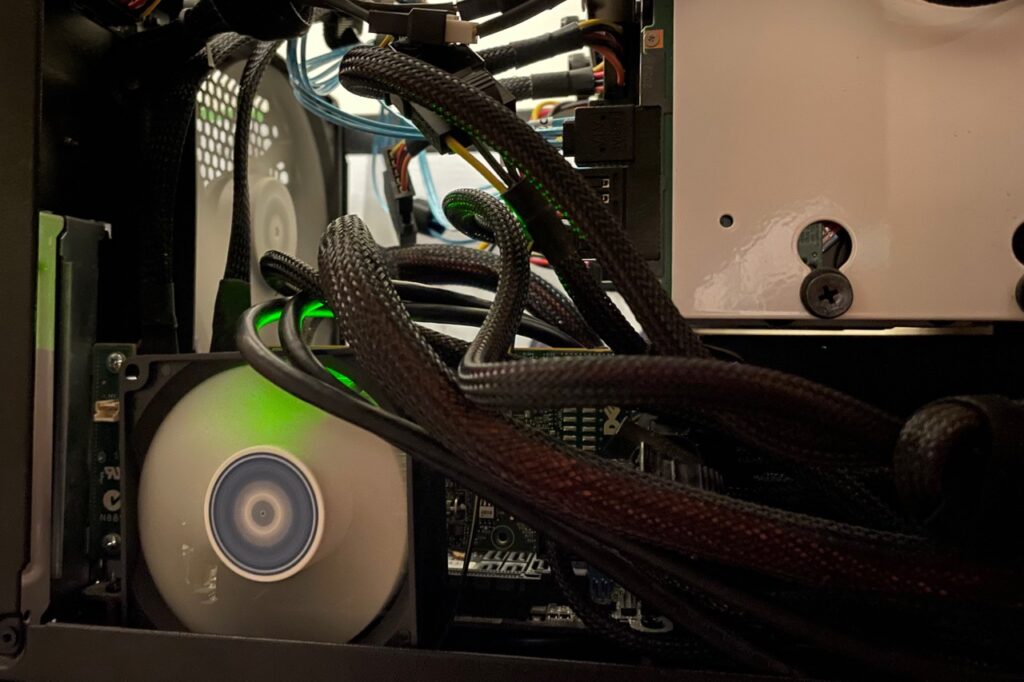For a Halloween party last weekend I wrote a python script to pause Spotify, play a random video and start music playback again. The videos were basic ogg files I cobbled together which showed a scary image and evil laughs or screaming with OpenShot. I can’t really share them, as I don’t have rights to the media, but it’s pretty simple to recreate them yourself.
The code for this script is on Github, and I’ve reproduced the latest snapshot below. Feel free to fork and improve if you want to scare your guests, or add support for other OS’s. Presently it only supports Linux because I used dbus to perform the play/pause actions.
[python]
#!/usr/bin/python
”’
This is a Halloween party script which pauses Spotify and plays a video
at random intervals.
”’
import random
import subprocess
from subprocess import call
from time import sleep
import os
import datetime
start_time = datetime.time(21, 0, 0)
stop_time = datetime.time(23, 0, 0)
video_dir = ‘/home/alex/Videos/scream/’
videos = { ‘scream1_nofade.ogg’: 30,
‘happy.ogg’: 1,
‘evil_laugh.ogg’: 5,
}
def time_in_range(start, end, x):
“””Return true if x is in the range [start, end]”””
if start <= end:
print(“start<end”)
return start <= x <= end
else:
print(“end<start”)
return start <= x or x <= end
def weighted_choice(weights):
total = sum(weights for video in weights)
r = random.uniform(0, total)
upto = 0
print(“total: %s\nrandom: %s” % (total, r))
for video in weights:
w = weights
if upto + w > r:
return video
upto += w
assert False, “shouldn’t get here”
def spotifyPause():
command = “dbus-send –print-reply –dest=org.mpris.MediaPlayer2.spotify /org/mpris/MediaPlayer2 org.mpris.MediaPlayer2.Player.Pause”
print(“pausing spotify”)
os.system(command)
def spotifyPlay():
print(“playing spotify”)
command = “dbus-send –print-reply –dest=org.mpris.MediaPlayer2.spotify /org/mpris/MediaPlayer2 org.mpris.MediaPlayer2.Player.PlayPause”
os.system(command)
def play_video(video_file):
print(“Playing %s” % video_file)
#call([‘/usr/bin/mplayer’, ‘-fs’, video_file], stdout=None, stderr=None)
#result = subprocess.Popen([‘/usr/bin/mplayer’, ‘-really-quiet’, ‘-fs’, video_file])
result = subprocess.check_call([‘/usr/bin/mplayer’, ‘-really-quiet’, ‘-fs’, video_file], stdout=None, stderr=None)
return result
def playBuzz(buzzfile):
print(“Buzz…”)
result = subprocess.check_call([‘/usr/bin/mplayer’, ‘-really-quiet’, ‘-ss’, ’18’, buzzfile], stdout=None, stderr=None)
return result
def infiniteLoop():
while 1:
current_time = datetime.datetime.now().time()
#if current_time > stop_time or current_time < midday:
choice = weighted_choice(videos)
random_time = random.randrange(1200,2400)
random_time = 3
video_file = video_dir + choice
print(“Chose video %s after %s seconds” % (video_file, random_time))
sleep(random_time)
# Whether to play buzz
buzz = False
if random.randrange(0,100) > 90:
buzz = True
# Continue if outside time range
if not time_in_range(start_time, stop_time, current_time):
print(“Not playing video, outside time range”)
continue
# Do it
spotifyPause()
if buzz:
playBuzz(‘/home/alex/Videos/scream/audio/buzz.mp3’)
play_video(video_file)
spotifyPlay()
if __name__ == “__main__”:
infiniteLoop()
[/python]

